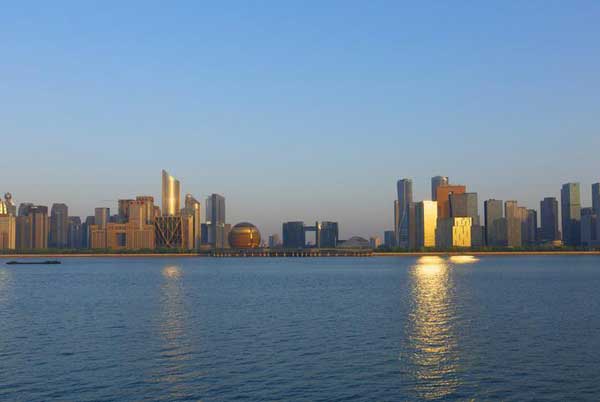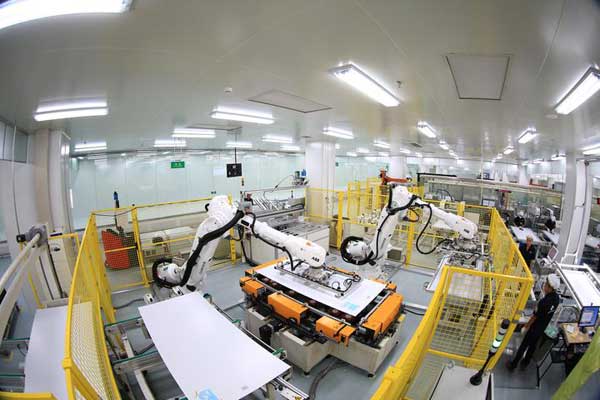Hangzhou's GDP hits 1.5 trillion yuan

Qianjiang New Town in Hangzhou, Zhejiang province [Photo/zj.zjol.com]
Hangzhou's GDP maintained stable growth in 2019, reaching 1.54 trillion yuan ($222.29 billion), up 6.8 percent year-on-year.
The growth was mainly driven by its digital and manufacturing sectors.
Statistics showed that the city's value added of industries above the designated scale (industries with annual revenue of more than $2.89 million) reached 353.1 billion yuan last year, up 5.1 percent year-on-year. High-tech industries accounted for 61.7 percent of the industries, up 4.5 percent from a year earlier.
Value added of core digital industries reached 379.5 billion yuan, up 15.1 percent year-on-year.

The smart factory of the famous energy solution provider Chint Group in Hangzhou [Photo/zj.zjol.com]
The modern services sector was also a major driver of economic growth.
Value added of the city's services sector surpassed 1 trillion yuan and contributed 72.9 percent to GDP growth. Value added of the financial services sector, health industry and cultural industry totaled 179.1 billion yuan, 97.5 billion yuan and 373.5 billion yuan respectively, up 9.1 percent, 12.5 percent, and 15.6 percent year-on-year.
Notably, Hangzhou saw 22 new listed companies last year, bringing the total number of listed companies to 192, ranking fourth in China.

Many people travel to Hangzhou during the National Day holiday in 2019. [Photo/zj.zjol.com]
The quality of life of residents was improved.
Per capita disposable income of local residents reached 59,261 yuan, up 9 percent year-on-year. Per capita disposable income of urban and rural residents reached 66,068 yuan and 36,255 yuan respectively, up 8 percent and 9.2 percent.
The city's general public budget expenditure was 195.3 billion yuan last year, up 13.7 percent, and expenditure on people's livelihood accounted for 78.6 percent of the total.
Consumption was also boosted. Sales of wearable intelligent devices and intelligent home appliances grew by 38.4 percent and 21.7 percent, respectively.
-
Foreign teacher, Hangzhou students capture picturesque countryside
August 9, 2023
-
Hangzhou Asian Games launch 50-day-to-go campaign
August 4, 2023
-
Hangzhou achieves 6.9% GDP growth in H1 2023
July 27, 2023



